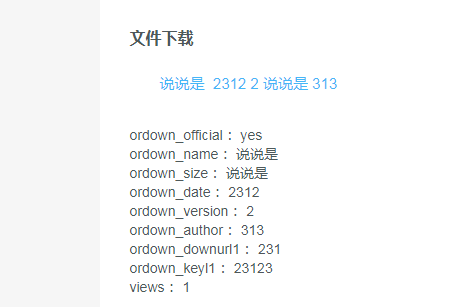WordPress中有个自定义字段的功能,这个功能让WordPress自定义程度更高,一般来说我们自定义字段都是知道key再取值,如果我们连key都不知道,该如何得到对应的值呢?WordPress函数the_meta,它能将文章中的所有自定义字段全部输出,有了前几篇文章的学习,与the_date、the_time相同,看它的函数名我们就应该明白,这个函数是用在主循环中的。
函数描述
显示一个关于文章自定义字段的列表。
函数原型
the_meta函数位于wp-includes/post-template.php文件中。
复制
function the_meta() {
if ( $keys = get_post_custom_keys() ) {
echo "<ul class='post-meta'>\n";
foreach ( (array) $keys as $key ) {
$keyt = trim( $key );
if ( is_protected_meta( $keyt, 'post' ) ) {
continue;
}
$values = array_map( 'trim', get_post_custom_values( $key ) );
$value = implode( $values, ', ' );
$html = sprintf("<li><span class='post-meta-key'>%s</span> %s</li>\n",/* translators: %s: Post custom field name */
sprintf( _x( '%s:', 'Post custom field name' ), $key ),
$value);
/**
* Filters the HTML output of the li element in the post custom fields list.
*
* @since 2.2.0
*
* @param string $html The HTML output for the li element.
* @param string $key Meta key.
* @param string $value Meta value.
*/
echo apply_filters( 'the_meta_key', $html, $key, $value );
}
echo "</ul>\n";
}
}用法
复制
<?php the_meta();?>
输出自定义字段的 ul/li 列表。效果如下图所示:
注意事项
the_meta函数只能使用在主循环中,并且会自动忽略下划线开始的自定义字段,如果你需要过滤可以使用 ‘the_meta_key’ 这个 filter 和 列表项目的 HTML 输出。






评论 (0)